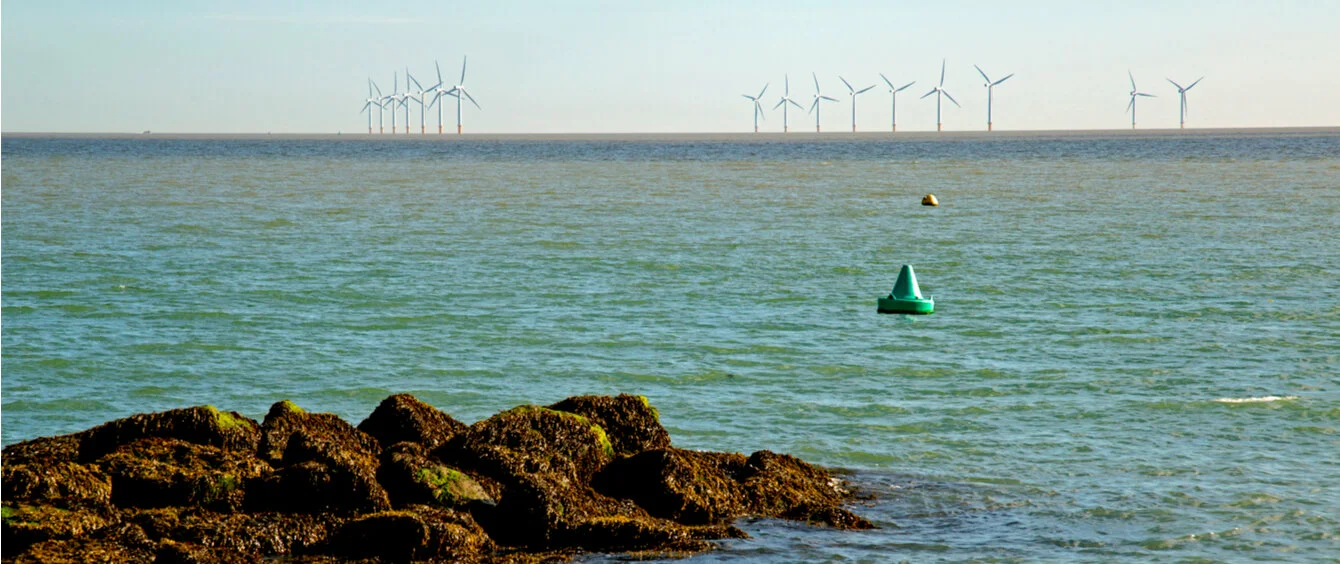How much is Europe’s wind power capacity set to expand over the next five years? A) by 88 gigawatts B) by 112 gigawatts or C) by 67 gigawatts? This isn’t just some quiz the industry association WindEurope has come up with. These are, in fact, the three scenarios with which the Wind Energy in Europe: Outlook to 2023 authors have forecast the next five years.
The difference in estimated figures speaks volumes about the uncertainty that is gripping Europe’s wind power industry as it looks toward the future. Given that projected growth rates could be anywhere between 36 and 60 percent, there is a lot of room for uncertainty. As a comparison: In its Renewables Outlook 2019, the International Energy Agency (IEA) states that global wind power capacity will grow by 62.4 or 76.3 percent between 2019 and 2024. Not only is the IEA more confident in its forecast, it also paints a more optimistic picture of the future of European wind power: “Expansion accelerates in the European Union, […] [while] competitive auctions continue to keep costs relatively low.”
Amount of additional wind turbines that have been installed in recent years
Overview of the last six years in gigawatts (Source: WindEurope)Numerous auctions underutilised
WindEurope is actually also expecting tenders for up to 65 gigawatts (GW) of wind power in the next five years – half of which will be for wind turbines and half for renewable energy sources in general. However, politicians in Brussels remain more sceptical than members of the IEA in Paris: “All around Europe, permitting is becoming more complex and more expensive as land becomes more constrained and the number of legal appeals increases.”
This is particularly evident in Germany. The decreasing number of permits has meant that none of the five wind power tenders that have taken place since May 2018 have offered enough power: According to WindEurope, only 1,493 megawatts (MW) of the 3,170 MW that were put out to tender were actually auctioned off. However, it would seem that approval procedures also tend to be more difficult in other countries. In France, for example, the authors identified a lack of a competent authority, whilst countries such as Ireland and Portugal have recently proven to be more ambitious.
This also applies to the Netherlands, which has seemed only mildly interested in wind power, despite its potential for capacity installation. Word on the street is that all hopes are now riding on the United Kingdom as the only nation set to build more wind power capacity in the period in question. Ultimately, however, slow and steady wins the race, which means that Germany is set to retain pole position as the nation with the largest wind power capacity in 2023 – ahead of Spain and the United Kingdom – despite its slower pace of installation.
Costs could fall more slowly
WindEurope believes that protracted approval procedures are decelerating the expansion of wind power in two ways: on the one hand directly, because construction begins later than anticipated, and on the other hand indirectly, because – as can be seen from the tenders that have not been exhausted in Germany – the delays discourage investors, not least because legal disputes come at a cost and revenue from electricity sales doesn’t kick in until later.
According to the WindEurope market outlook, “this uncertainty weighs heavily on the supply chain and could impact the significant cost reductions achieved in recent years”. The association believes that project development costs will invariably rise if deadlines are repeatedly ignored whilst personnel and machines idle on the side lines waiting to be deployed. Not to mention the fact that banks also demand security surcharges for loans when risks are increased, which applies to new plants as well as to existing plants which are to undergo ‘repowering’ to extend their service lives and increase output.
A record year in 2019?
Nevertheless, according to plans, 2019 could be a record year for the European wind power industry: Spain, Sweden and Norway alone plan on installing 4.8 GW of onshore capacity. The authors are less concerned with the fact that only a portion of this capacity was connected to the grid by mid-2019, as construction work is only expected to truly come into its own in the summer months. The German onshore industry, however, will probably have its worst year yet this century so far.
European offshore wind power, on the other hand, set a new record in the first half of 2019: The United Kingdom, Belgium, Denmark and Germany connected 1.9 GW to the grid between January and June.
WindEurope's three central scenarios
Overview of the expected expansion of wind turbines until 2023 in gigawatts (Source: WindEurope)At the end of the day, however, WindEurope’s main forecast scenario estimates that 2019 will fall short of its record prognoses: 16.8 GW of additional wind power capacity are expected to be installed – 0.3 GW less than in 2017, but a whopping 44 percent more than in 2018, the weakest year since 2011. At the end of the day, all uncertainties aside, WindEurope believes Europe’s wind power industry is on the up – with either 13 or 18 or 22 GW of additional capacity being installed each year by 2023.
